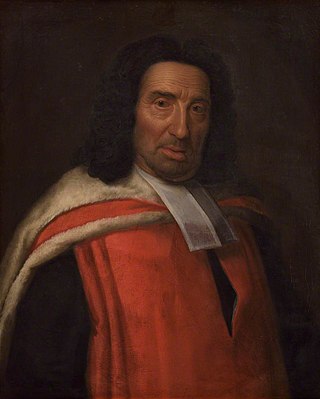Related Research Articles

John Venn, FRS, FSA was an English mathematician, logician and philosopher noted for introducing Venn diagrams, which are used in logic, set theory, probability, statistics, and computer science. In 1866, Venn published The Logic of Chance, a groundbreaking book which espoused the frequency theory of probability, arguing that probability should be determined by how often something is forecast to occur as opposed to "educated" assumptions. Venn then further developed George Boole's theories in the 1881 work Symbolic Logic, where he highlighted what would become known as Venn diagrams.

St Peter Mancroft is a parish church in the Church of England in the centre of Norwich, Norfolk. After the two cathedrals, it is the largest church in Norwich. It was originally established by Ralph de Gael, Earl of East Anglia, between 1066 and 1075. It was later rebuilt, between 1430 and 1455. It stands on a slightly elevated position, next to the market place.

Gonville and Caius College, often referred to simply as Caius, is a constituent college of the University of Cambridge in Cambridge, England. Founded in 1348 by Edmund Gonville, it is the fourth-oldest of the University of Cambridge's 31 colleges and one of the wealthiest. In 1557, it was refounded by alumnus John Caius. The college has been attended by many students who have gone on to significant accomplishment, including fifteen Nobel Prize winners, the highest of any Oxbridge college.
Thomas Bacon was the fifteenth master of Gonville Hall, Cambridge from 1552.

Sir John Ellys or Ellis (1634?–1716) was an English academic, Master of Gonville and Caius College, Cambridge from 1703.
Richard Cubitt Johnson was an English cricketer who played in two matches for Cambridge University that are now considered to have been first-class. He was born at Lavenham, Suffolk and died at Cambridge.
Ward Maule was an Indian-born English clergyman and cricketer who played first-class cricket for Cambridge University and for the amateur Gentlemen of Kent team. He was born in Mangalore, Karnataka, India and died at Boulogne, France.
William Pitt Prest was an English cricketer who played for Cambridge University, Cambridge Town Club and other amateur teams between 1850 and 1862. He was born at Stapleford, Cambridgeshire and died at East Molesey, Surrey.
Edward Philip Ash was an English schoolmaster and a cricketer who played five first-class matches for Cambridge University Cricket Club in 1865. He was born at Brisley, Norfolk and died at Petersfield, Hampshire.
Francis Edmund Stacey was a Welsh-born law officer and a cricketer who played first-class cricket in 15 matches for Cambridge University, the Marylebone Cricket Club (MCC) and the Gentlemen of England side. He was born at Llandaff, Cardiff and died at Llandough Castle, Llandough, Glamorgan.
Frederick Thackeray was an English clergyman and cricketer who played first-class cricket for Cambridge University, the Marylebone Cricket Club (MCC) and many other amateur teams between 1837 and 1854. He was born at Cambridge and died at Chappel, Essex.
John Bowman Turner was an English clergyman and a cricketer who played in two first-class cricket matches for Cambridge University in 1841. One source states that he was born in Clapham, then part of Surrey; another indicates his birthplace was at Clapton in Middlesex. He died at Norwich, Norfolk.
Rice Richard Clayton, sometimes Richard Rice Clayton, was a British Conservative politician.
Charles William Henry Evans was an English first-class cricketer and British Army officer. Evans served in the army from 1874–1900, seeing action during the Anglo–Egyptian War, the Mahdist War and campaigns in the North-West Frontier Province of British India, for which he was decorated with the Distinguished Service Order. In addition to his military career, Evans also played first-class cricket for Cambridge University and the Gentlemen of England.

A stained glass window commemorating British statistician, geneticist, and eugenicist R. A. Fisher was installed in the dining hall of Gonville and Caius College in Cambridge, England in 1989. It depicts a 7x7 Latin square, as featured in Fisher's The Design of Experiments. The idea for the window came from college fellow, A. W. F. Edwards, and the execution was the work of Maria McClafferty.
Charles Clayton was an English first-class cricketer and clergyman.
William Hoare was an English first-class cricketer, cricket administrator, banker and brewer.
Edward Beversham Harman was an Irish first-class cricketer and physician.
Edward Joseph How was an English first-class cricketer, banker, and educator.
Arthur Keane Tharp was an English first-class cricketer, British Army officer and businessman.
References
- 1 2 Venn J & Venn JA (1922) Arthur Ceely in Alumni cantabrigienses; a biographical list of all known students, graduates and holders of office at the University of Cambridge, from the earliest times to 1900 , p.547, University of Cambridge. (Available online. Retrieved 2017-04-16.)
- 1 2 3 4 5 6 Biographical History of Gonville and Caius College 1349-1897, p.316. Cambridge University Press Archive.
- 1 2 3 Parrish WD (1879) List of Carthusians, 1800 to 1879, p.43. Lewes: Farncombe and Co. Retrieved 2020-06-15.
- ↑ Arthur Ceely, CricInfo. Retrieved 2017-04-16.
- ↑ Arthur Ceely, CricketArchive. Retrieved 2017-04-16.
- ↑ Carlaw D (2020) Kent County Cricketers A to Z. Part One: 1806–1914 (revised edition), pp. 106–107. (Available online at the Association of Cricket Statisticians and Historians. Retrieved 2020-12-21.)
- ↑ Aylesbury, St Mary The Virgin - Stained Glass & Aylesbury, St Mary The Virgin - Stained Glass, Glass Angel's Flickr photostream. Retrieved 2017-04-16.